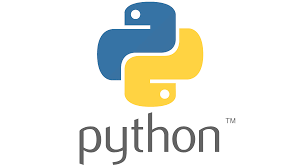
Python Dictionary is used to store the data in a key-value pair format. Python’s dictionary data type can mimic real-world data arrangements where a particular value exists for a particular key. The mutable data structure is what it is. The element Keys and values is used to define the dictionary.
- Keys must consist of just one thing.
- Any type of value is acceptable, including list, tuple, integer, etc.
Example:
Dict = {1: 'Rahul', 2: 'Shruti', 3: 'Ron'}
print(Dict)Output:
{1: 'Rahul', 2: 'Shruti', 3: 'Ron'}Dictionary and List:
The following traits apply to both dictionaries and lists:
- Both are mutable.
- Both are dynamic. They can expand and contract as necessary.
- Both can be nested. One list may include another list. Another dictionary may be found inside one. A list can also be found in a dictionary, and vice versa.
Lists and dictionaries differ primarily in the way that elements are accessed:
- Indexing allows access to list elements based on their location within the list.
- Keys are used to accessing dictionary elements.
Dictionary with integer keys:
Dict = {1: 'Rahul', 2: 'Shruti', 3: 'Ron'}
print(Dict)Dictionary with String keys:
Dict = {'ab': 'Rahul', 'cd': 'Shruti', 'ef': 'Ron'}
print(Dict)Empty Dictionary:
Dict = {}
print("Empty Dictionary: ")
print(Dict)Output:
Empty Dictionary:
{}Nested Dictionary:
Dict = {1: 'Maths', 2: 'HIndi',
3: {'S1': 'Biology', 'S2': 'Chemistry', 'S3': 'physics'}}
print(Dict)
Output:
{1: 'Maths', 2: 'HIndi', 3: {'S1': 'Biology', 'S2': 'Chemistry', 'S3': 'physics'}}Accessing elements of a dictionary:
Dict = {'ab': 'Rahul', 'cd': 'Shruti', 'ef': 'Ron'}
print(Dict)
for i in Dict:
print ("Key: " + i + " and Element: " + Dict[i]);Output:
{'ab': 'Rahul', 'cd': 'Shruti', 'ef': 'Ron'}
Key: ab and Element: Rahul
Key: cd and Element: Shruti
Key: ef and Element: RonDeleting element(s) in a dictionary:
Deleting elements with the del keyword is similar to removing items from a list.
Example:
Dict = {1: 'Maths', 2: 'HIndi',
3: {'S1': 'Biology', 'S2': 'Chemistry', 'S3': 'physics'}}
del Dict[3]
print(Dict)
Output:
{1: 'Maths', 2: 'HIndi'}Note: also read about Remove elements from a Python List
Follow Me
Please follow me to read my latest post on programming and technology if you like my post.
https://www.instagram.com/coderz.py/
https://www.facebook.com/coderz.py
Staying up to the mark is what defines me. Hi all! I’m Rabecca Fatima a keen learner, great enthusiast, ready to take new challenges as stepping stones towards flying colors.
Leave a Comment
You must be logged in to post a comment.